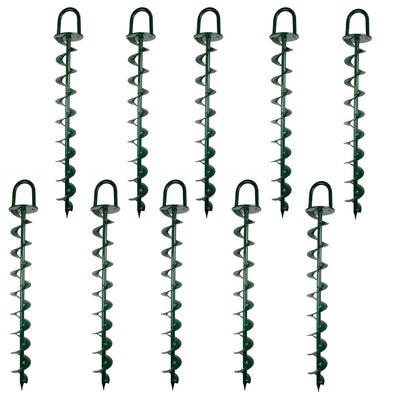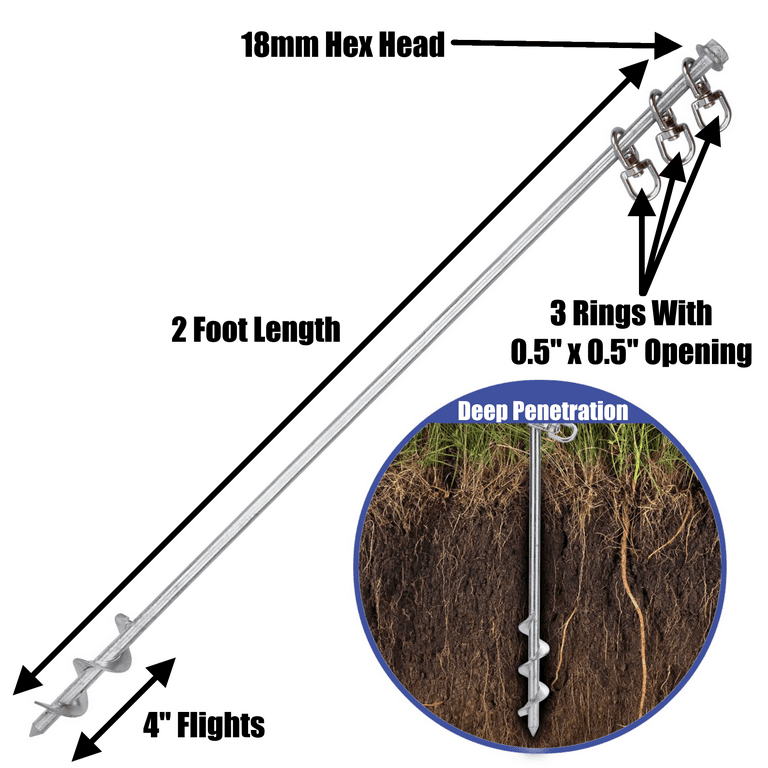Selecting the Best Ground Anchor for Outdoor Use
Selecting the Best Ground Anchor for Outdoor Use
Blog Article
Explore the Different Kinds Of Ground Anchor for Your Following Task
When beginning on a building or landscape design task, understanding the numerous kinds of ground anchors available is vital to guaranteeing both security and resilience (Ground Anchor). From auger anchors, which succeed in diverse dirt conditions, to risk supports made for short-lived installments, the choices are countless. Additionally, concrete and screw anchors existing distinct advantages in specific situations, while deadman supports are customized for applications requiring resistance to side forces. The selection of a suitable anchor type can dramatically influence the overall success of your task, prompting further exploration into their particular advantages and applications.

Auger Anchors
Auger supports are a popular selection in numerous construction and landscaping tasks because of their one-of-a-kind design and reliable anchoring capabilities. These anchors consist of a helical screw-like shaft that is driven right into the ground, allowing for a safe and stable hold. The spiral style helps with simple installation and makes best use of resistance against lateral pressures, making auger anchors especially reliable in applications such as secure fencing, short-term structures, and erosion control.
The installation process of auger supports is reasonably simple. Auger anchors can be easily removed and recycled, which adds to their cost-effectiveness and sustainability.
Among the significant benefits of auger anchors is their ability to distribute lots evenly throughout the bordering soil, minimizing the threat of soil disruption and minimizing ecological impact. Furthermore, they are much less susceptible to heaving or loosening up with time compared to typical securing methods. As a result, auger supports are an outstanding selection for jobs calling for trusted and durable anchoring services.

Risk Anchors
When it pertains to safeguarding frameworks in a selection of outside applications, stake anchors use a trustworthy and uncomplicated solution. These anchors are usually built from durable products such as steel or aluminum, developed to hold up against ecological stresses while providing optimum stability. Their simple style permits fast setup, making them a suitable option for permanent or temporary anchoring requirements.
Stake supports are especially helpful in protecting tents, covers, and other lightweight frameworks against wind and climate. They work by being driven right into the ground at an angle, developing a solid hold that resists pull-out pressures - Ground Anchor. The effectiveness of risk supports depends on a number of factors, consisting of soil kind, moisture content, and the angle of setup
For included safety, lots of risk supports come with attachment points for ropes or straps, enabling tension adjustments as essential. In applications such as landscape design or building and construction, they can successfully stabilize equipment or frameworks on uneven terrain. In general, risk supports offer a economical and versatile service for securing different outdoor installations, making them a preferred option for contractors and do it yourself enthusiasts alike.
Concrete Anchors
Concrete supports supply a durable remedy for protecting structures to concrete surfaces, making certain security and safety and security in different applications. These supports are essential for projects ranging from household building and constructions to large commercial installments. They are available in different kinds, including development supports, adhesive supports, and undercut supports, each made for certain tons requirements and environmental conditions.
Glue supports utilize high-strength epoxy or material to bond the anchor to the concrete, offering superior load-bearing capabilities, particularly in fractured concrete scenarios. Undercut supports develop a distinct form within the concrete, supplying remarkable holding power, specifically in applications where tensile lots are widespread.
Picking the suitable concrete support entails thinking about aspects such as the weight of the tons, the condition of the concrete, and ecological problems. Correct installment strategies my website are crucial to make sure ideal efficiency and integrity. When executed appropriately, concrete supports considerably enhance the architectural integrity of numerous projects, making them important in modern-day building and construction practices. Recognizing the certain requirements of your project will aid in choosing the best kind of concrete anchor for the job.
Screw Anchors

Screw anchors are a functional securing option that can be properly used in a selection of applications where traditional concrete supports might not suffice. These supports include a helical design that permits them to be conveniently driven right into the ground, making them perfect for usage in dirt and other substrates. Their one-of-a-kind structure supplies exceptional holding power and resistance to pull-out forces, making them ideal for numerous tasks, from landscaping to structural support.
One of the primary benefits of screw anchors is their ease of installation. They require marginal devices and can commonly be mounted without the requirement for excavation, which saves both time and labor expenses. In addition, screw anchors can be removed and recycled, offering a lasting solution for temporary applications.
Screw anchors are specifically valuable in areas where soil conditions are challenging, such as sandy or loose dirts. Their ability to be mounted at varying depths permits personalization based on details job needs. On the whole, screw anchors offer a effective and trusted anchoring technique, making them an excellent option for specialists and designers looking for reliable services for their tasks.
Deadman Anchors
Deadman anchors work as a durable option for supporting structures in tough problems, particularly where traditional anchoring methods may fail. These supports are composed of huge, hefty things hidden underground, this which produce resistance versus lateral pressures. The style usually entails a horizontal component, such as a block of concrete or a metal plate, buried in the soil, to which cords or straps are connected.
The effectiveness of deadman supports exists in their capacity to disperse tons over a larger location, lowering the danger of failure in unpredictable soil conditions. They are especially helpful in applications such as preserving walls, short-term frameworks, and incline stabilization, original site where soil movement can jeopardize the stability of the structure.
Installation of deadman supports needs mindful planning to ensure they are positioned at the proper depth and orientation, maximizing their load-bearing ability. While they might call for even more labor and product than lightweight anchors, their integrity in damaging conditions makes them invaluable for long-term jobs. Moreover, deadman anchors are flexible and can be adjusted to different applications, making them a best option for engineers facing unique challenges in their tasks.
Conclusion
In summary, picking the suitable kind of ground support is essential for making sure stability and protection in different jobs. Auger supports stand out in diverse dirt conditions, while stake anchors match short-term applications. For concrete surfaces, development and adhesive supports give trustworthy alternatives, and screw anchors supply adaptability in difficult terrains. Deadman supports are especially reliable in withstanding side forces for maintaining walls. Mindful factor to consider of these alternatives will improve job outcomes and architectural stability.
In addition, concrete and screw supports existing one-of-a-kind advantages in specific situations, while deadman anchors are customized for applications calling for resistance to side pressures - Ground Anchor.Auger anchors are a prominent option in various building and construction and landscape design tasks due to their distinct layout and effective anchoring capacities. They come in various kinds, consisting of growth anchors, sticky anchors, and undercut supports, each designed for specific load demands and environmental problems
Glue anchors use high-strength epoxy or resin to bond the support to the concrete, supplying premium load-bearing capabilities, especially in cracked concrete circumstances. In general, screw anchors provide a reliable and dependable securing method, making them an exceptional option for engineers and service providers seeking reliable solutions for their tasks.
Report this page